Gilbert Walker
People Type:
The Walker group focuses in two, primary research areas of surface chemistry: 1) studies of the interaction of synthetic nanomaterials with living systems and light, and 2) the development of the scientific instruments necessary to extend this effort significantly. Three examples are mentioned below, and many more can be found on our group home page.
Rational Design of Aquatic Materials: In the first example, we have developed an amphiphilic block copolymer system to guide how organisms sense a surface. Briefly, the nanoscale patches are spaced to interact similarly spaced sensor elements on organisms – in this case the surface sensors of the single motile cell stage of an alga. We are expanding this work in studying cell-environment coupling, in natural and rationally designed cell systems. We are interested in in the role of nanoscale stiffness and interfacial energy variations.
We recently made a breakthrough discovery about hydrophobic hydration. This result identifies a lengthscale where the hydration energy turns over from solute volume to surface area dependent, and has important implications for ligand binding, protein folding and aggregation. We have recently observed different equilibria of osmolytes with nanoscale hydrophobic materials, which governs the hydrophobic transfer free energy.
These discovered principles have guided our development of practical, polymer-based and eco-friendly marine anti-fouling technology done with guidance from with fish farmers. Our technology addresses ~20% of the cost of fish production by aquaculture. A large scale field trial of our materials involving 100 meter circumference fish cages is being undertaken. In marine environmental chemistry, we work the whole problem: what are the environmental risks of current materials, and what practical improvements can we offer?
Nanophotonic materials for Disease Detection: In the second example, our research and development in bioplasmonics aims to shorten the time needed for diagnosis and improve prognosis for cancers, such as lung cancer and leukemia, by incorporating plasmonics into diagnostic platforms. We are using tiny metal particles as light beacons for the receptors, and nanostructured metal surfaces as sensitive transmitters of molecular binding events at cell surface receptors. We have modified a commercial flow cytometer and proven the principle of our approach, but considerable work remains.
Nanoscale IR Imaging and Surface Phonon Polaritons: We have recently developed a near field infrared spectroscopic imaging technique that allows rapid collection of the IR spectrum of regions as small as 15nm in diameter. This spectroscopic instrument was designed to follow our curiosity about surface phonon polaritons. These are propagating quasi-particles in semiconductors similar to surface plasmons in metals, since a large negative real part of the material index is required, but surface phonon polaritons are much less understood. We have recently been focused on boron nitride(BN) materials, in part due to their potential energy applications. We predicted and observed the first 1D phonon polariton responses in BN nanotubes. We are exploring how to couple these phonon polaritons to plasmons (e.g., in graphene), and we are curious about the mechanisms of energy transduction, in both dry and wet environments.



